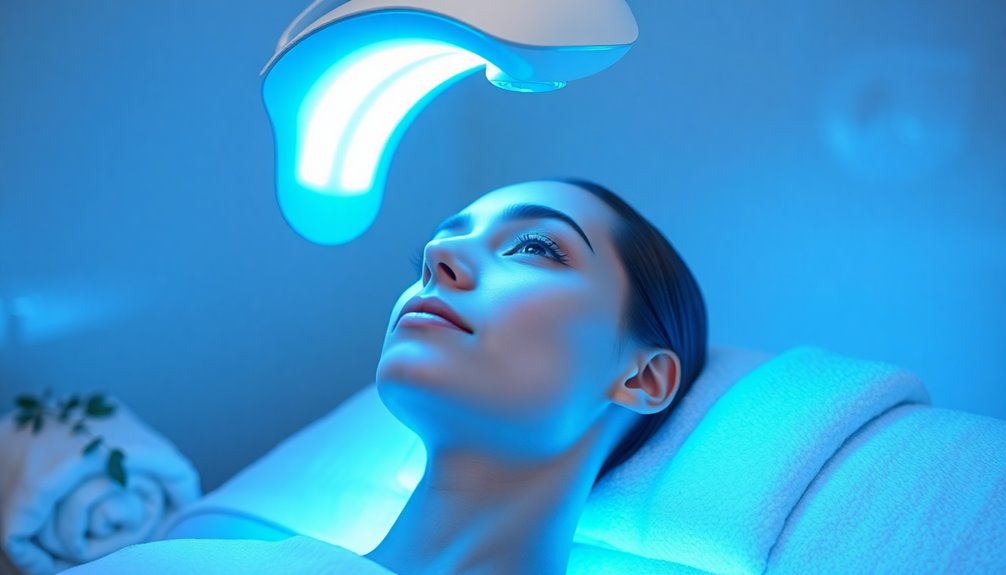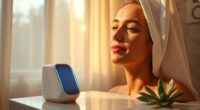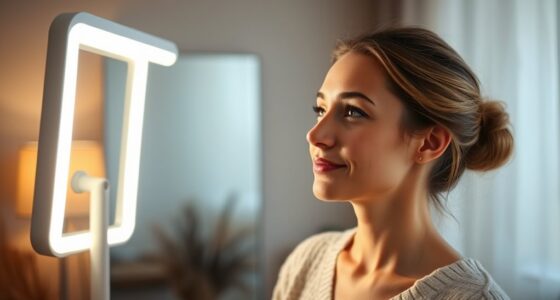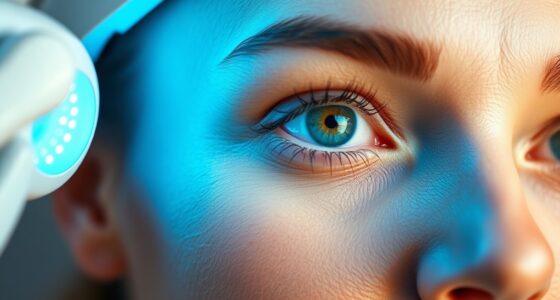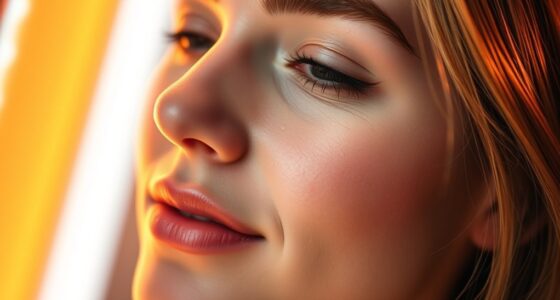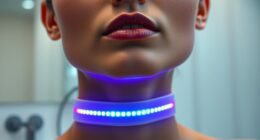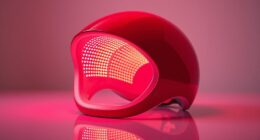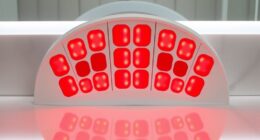Blue light therapy is the acne solution you’ve been waiting for. It uses specific wavelengths of light to target acne-causing bacteria, effectively reducing breakouts without harming your skin. In clinical studies, users experienced significant improvements, with some reporting up to a 77% reduction in inflammatory lesions. Treatments are quick and non-invasive, fitting easily into your routine. While side effects like dryness and redness can occur, they’re usually mild and temporary. With various at-home devices available, you can explore this effective option. Discover how to get the most out of your treatment and which device suits you best. Additionally, blue light therapy is not only beneficial for treating acne but has also shown promise for other skin conditions, including redness associated with rosacea. Many users have found that incorporating blue light therapy for rosacea into their skincare routine can help to calm flare-ups and reduce overall skin irritation. With proper guidance and consistent use, you can maximize the potential benefits of this versatile treatment for clearer, healthier skin.
Key Takeaways
- Blue light therapy effectively targets acne-causing bacteria, promoting healthier skin through a non-invasive treatment process.
- Clinical studies show up to a 77% improvement in inflammatory acne lesions with consistent use.
- Treatment sessions are quick and can be performed at home, making it convenient for users.
- Common side effects are mild and temporary, ensuring safe use for most skin types.
- Affordable at-home devices are available, providing a cost-effective alternative to professional treatments.
Mechanism of Action
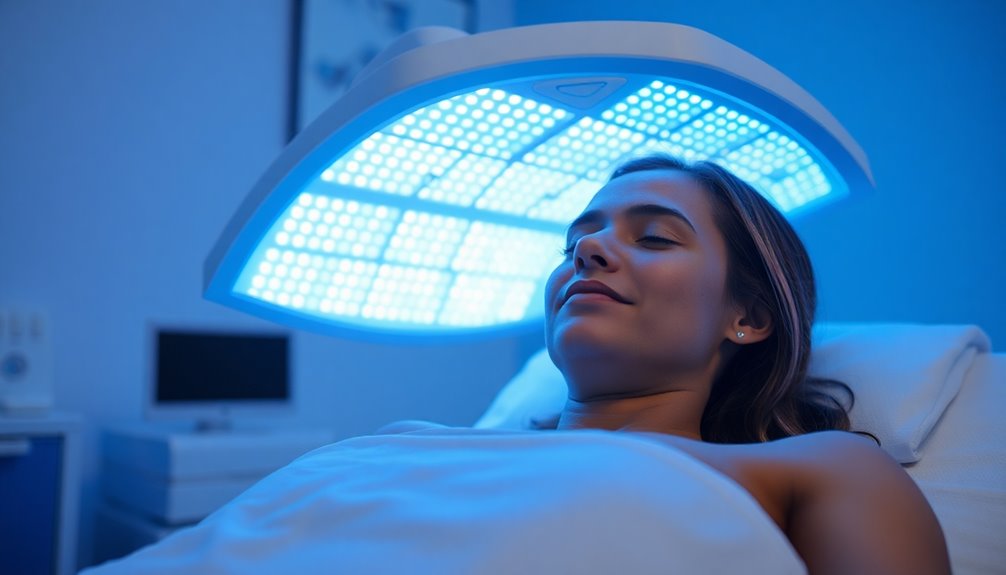
When it comes to treating acne, understanding the mechanism of action behind blue light therapy is crucial. This therapy works by activating porphyrins released by acne-causing bacteria, specifically targeting the Propionobacterium acnes.
When you expose these porphyrins to blue light in the 405-420 nm range, they absorb the light and produce free radicals. These free radicals effectively destroy the bacteria without harming your normal skin, making it a targeted treatment. Additionally, the photodynamic process initiated by blue light leads to the production of peroxide, further enhancing bacterial killing. The non-invasive nature of this therapy ensures a safer option for reducing inflammation and promoting a healthier complexion, allowing you to tackle acne more effectively. Furthermore, most patients see improvement within a month with twice-weekly treatments, showcasing the therapy's efficiency.
Efficacy and Clinical Studies
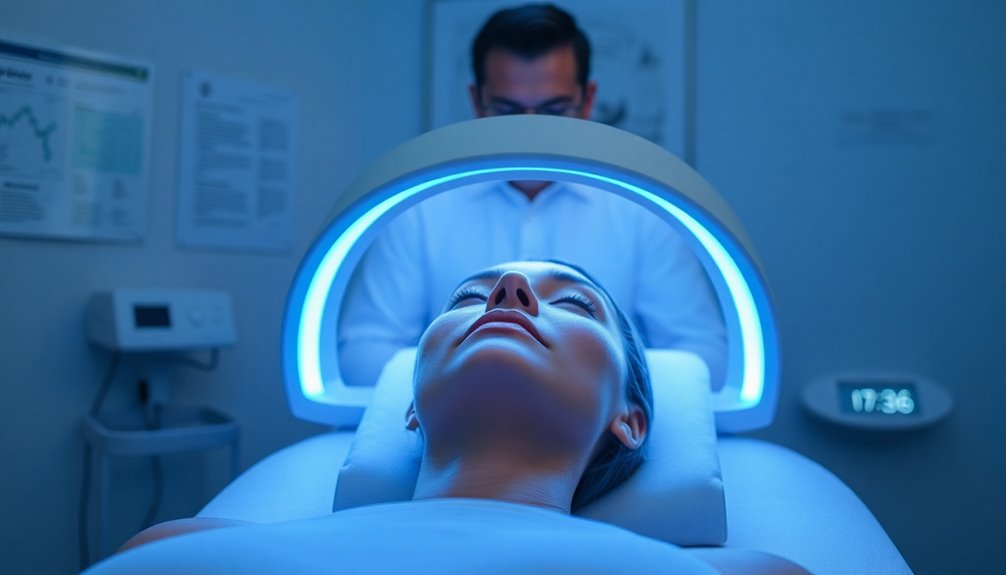
Blue light therapy has demonstrated notable efficacy in treating acne, as evidenced by numerous clinical studies. Research shows significant improvements in acne lesions, with one study reporting a 64% reduction after five weeks. Systematic reviews reveal a 77% improvement in inflammatory lesions and a 54% reduction in non-inflammatory ones. Combining blue light with other treatments can further enhance results, as seen in studies showing over 62% improvement when paired with diode lasers. While individual responses can vary, multiple sessions often yield noticeable changes. Notably, a split-face trial found that 51.7% of participants experienced a significant reduction in acne severity after 12 weeks. This therapy is FDA-approved for moderate acne vulgaris, ensuring its credibility and safety for patients seeking effective treatment options.
Safety and Side Effects
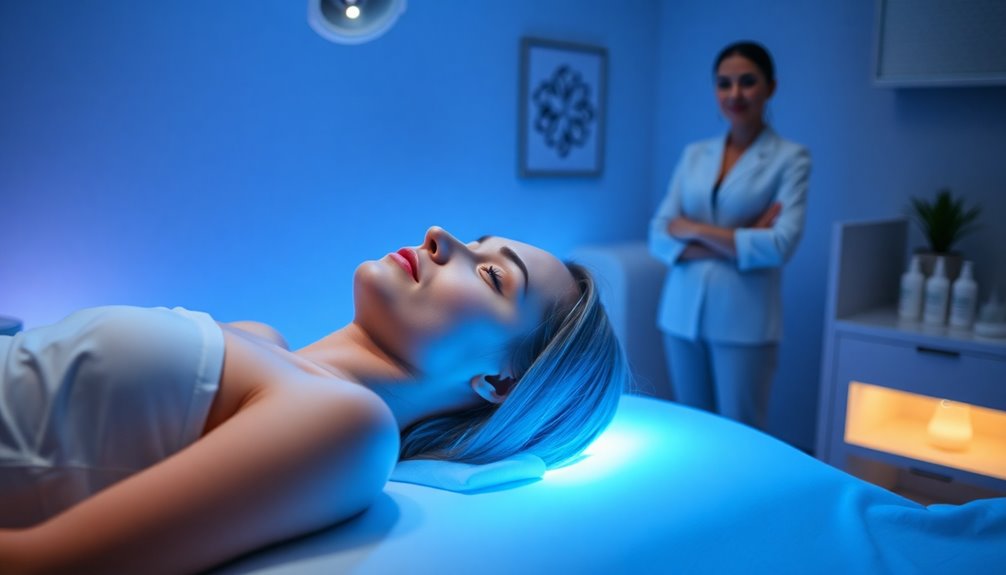
While blue light therapy is generally safe for treating acne, it's essential to be aware of potential side effects and precautions. You might experience mild and temporary effects such as dry skin, stinging, itchiness, irritation, or redness that could last up to a week. Additionally, it's important to note that this therapy is often used in conjunction with other dermatological treatments, making it a part of a comprehensive approach to skin care advanced technology. Rarely, some individuals may face changes in skin color. If you have conditions like porphyria, lupus, or allergies to porphyrins, avoid this treatment. Also, be cautious with photosensitizing drugs.
To protect your skin, avoid direct sunlight for 48 hours post-treatment, and apply sunblock every few hours. While there are no significant long-term risks, following the manufacturer's instructions is crucial for safe use and optimal results.
Application Techniques
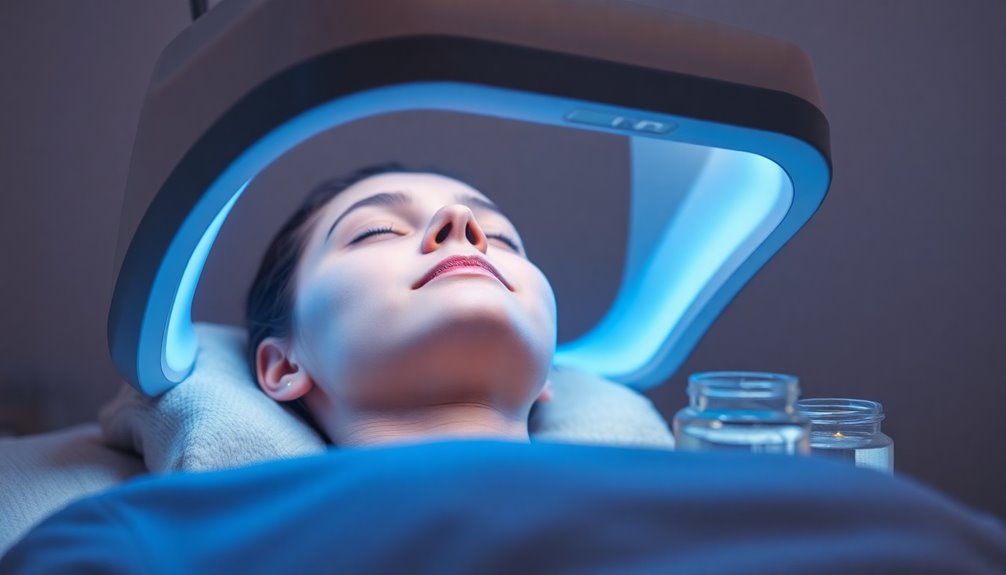
To achieve the best results with blue light therapy for acne, it's crucial to follow specific application techniques. Each treatment session should last about 3 minutes per targeted area, and you can use the device up to three times daily, with a recommended frequency of twice daily.
For optimal outcomes, maintain this routine for 4-8 weeks. You can treat both spot acne and larger areas, including sensitive spots like the beard area. Many individuals with acne are dissatisfied with oral or topical treatments, making light therapy a promising alternative.
Always protect your eyes by avoiding direct light exposure or wearing goggles. No special skin preparation is needed, but ensure your device is FDA-cleared for safety.
Consistency is key, so monitor your progress and adjust your treatment plan as needed for the best results.
Cost and Accessibility
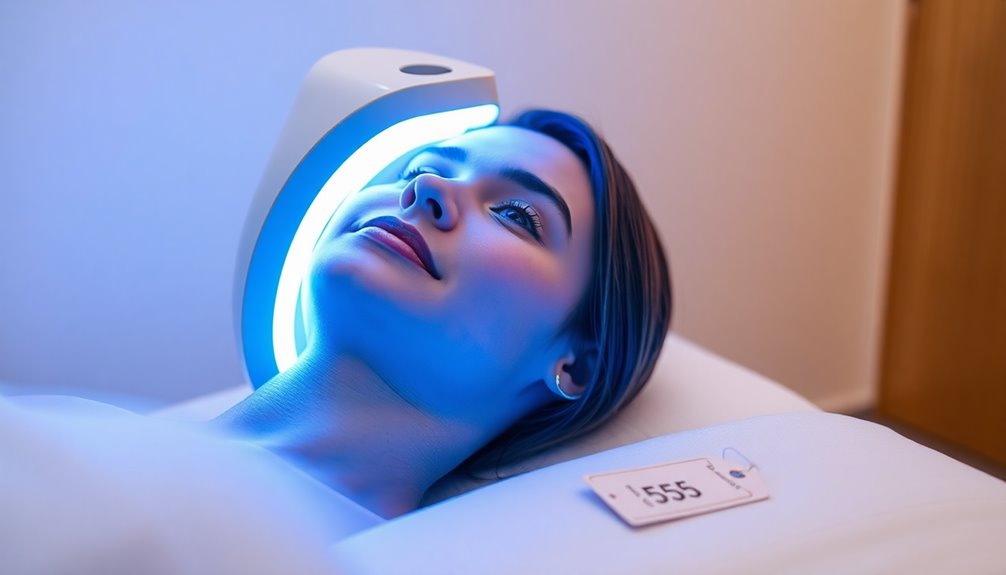
Finding the right treatment for acne involves not just understanding application techniques but also considering the cost and accessibility of blue light therapy.
If you opt for professional sessions, expect to pay between $40 and $60 each, with full packages costing $1,000 to $1,500.
At-home devices range dramatically, from $14 to $1,795, giving you options based on your budget. For instance, the Celluma FACE, priced at $795, offers a compact solution for targeted facial treatments.
While professional treatments are more expensive, they're administered by trained professionals, ensuring effective use.
At-home devices allow for flexibility, as you can treat your skin whenever you want.
Just keep in mind that most insurance plans don't cover this therapy, so you'll need to budget accordingly.
Also, be cautious about skin care products before and after your sessions.
Additional Benefits
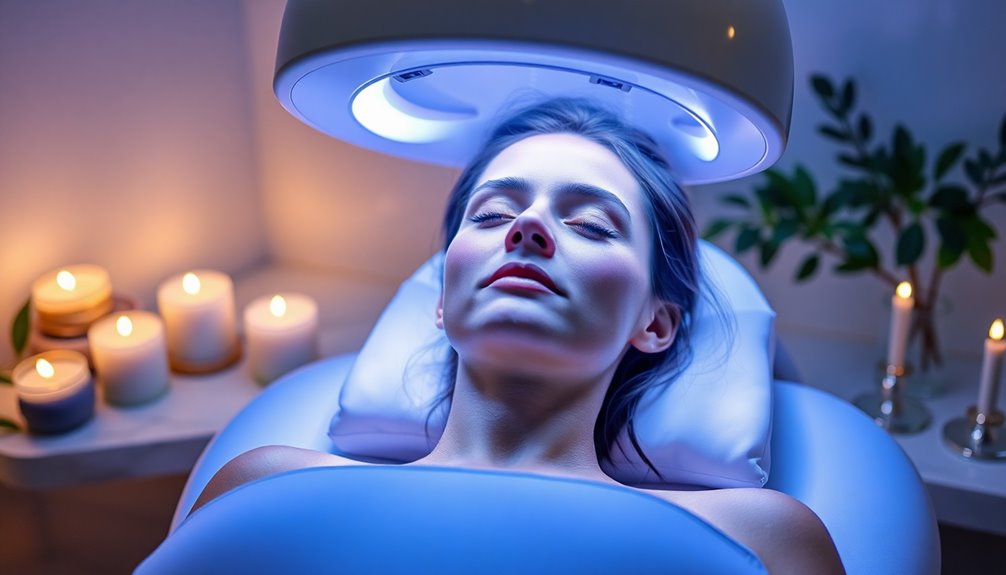
Blue light therapy offers more than just a solution for acne; it also provides several additional benefits that can enhance your overall skin health.
This therapy improves skin texture, promotes clarity, and reduces signs of aging, leaving you with a smoother and more even skin tone. Its anti-bacterial properties specifically target the *P. acnes* bacterium, effectively killing acne-causing bacteria and reducing lesions.
Plus, it has anti-inflammatory effects that help decrease redness associated with acne. The treatment is safe, free from harmful UV rays, and features only mild side effects like temporary redness. Furthermore, this therapy is a non-surgical, minimally invasive procedure that allows for precise targeting of specific areas of concern.
With minimal downtime, you can quickly return to your daily activities while enjoying the rejuvenating effects of blue light therapy.
Comparison With Other Treatments
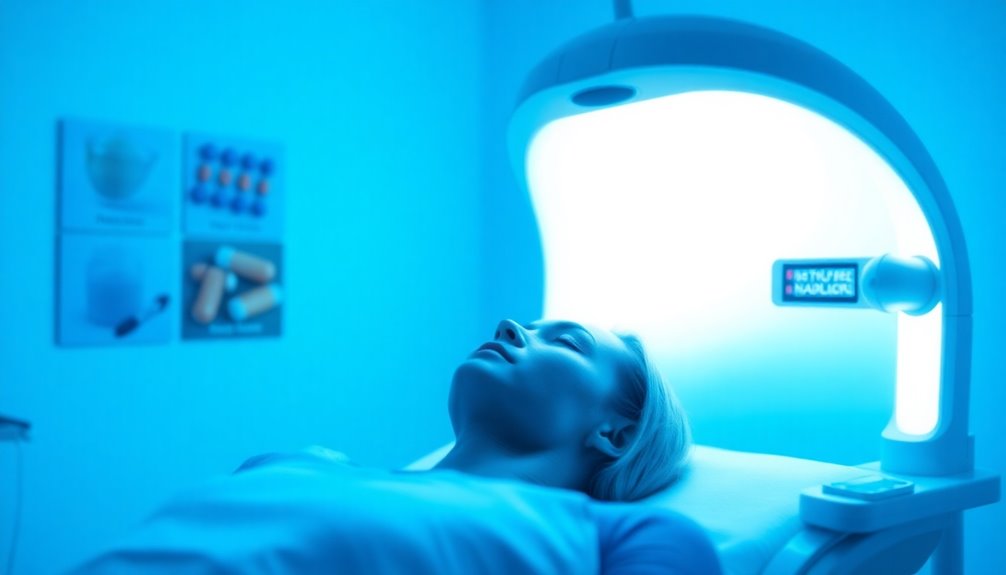
While various treatments exist for acne, blue light therapy stands out due to its targeted approach against acne-causing bacteria. Compared to red light therapy, blue light is particularly effective for reducing breakouts and inflammation. Additionally, low-level light therapy employs specific wavelengths that can penetrate different skin layers, enhancing the overall treatment effectiveness.
However, red light therapy shows a slightly higher improvement rate and causes fewer adverse reactions. It promotes healing and addresses chronic skin conditions, making it a good option if you're also worried about scarring.
On the other hand, blue-red light therapy combines the benefits of both wavelengths, enhancing effectiveness by targeting different skin depths. This method is safe and well-tolerated, making it an appealing choice.
Ultimately, understanding these comparisons can help you decide which treatment aligns best with your needs.
Choosing the Right Device
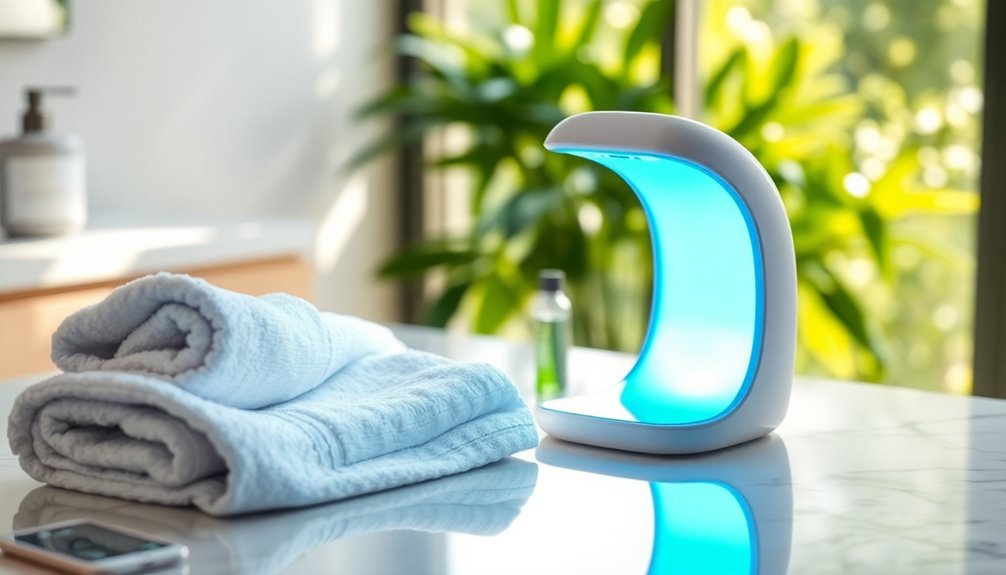
How can you choose the best blue light therapy device for your acne treatment?
First, decide between full-face treatment or spot treatment. If you want comprehensive care, consider devices like the Lumi Visage 7-Color LED Face Mask or the reVive DPL IIA. For targeted spots, the Foreo Espada and SolaWave Bye Acne are excellent choices.
Next, think about multi-light therapy options, which can enhance your results. Regular use of these devices can lead to visible improvements in skin texture over time.
Portability matters too; lightweight devices like the Celluma and Project E Beauty make it easy to treat acne on the go.
Finally, balance your budget with value. Affordable options like the Silk'n Blue Acne Treatment Device offer effective results, while pricier models provide advanced features.
Choose what suits your needs best!
Patient Experiences and Testimonials
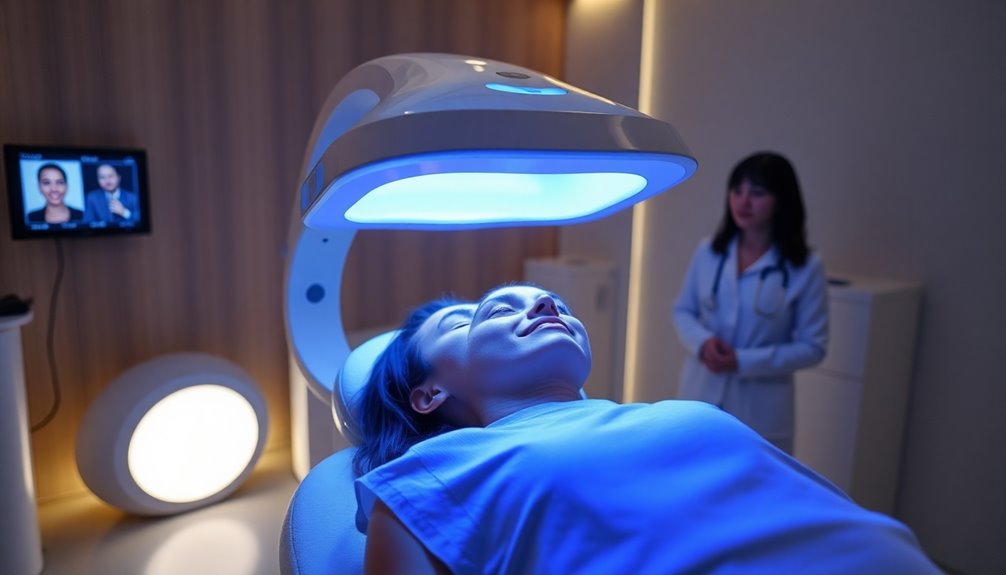
Many users have shared positive experiences with blue light therapy, noting its effectiveness in tackling acne. You might notice a significant reduction in acne severity, often seeing improvements faster than with other treatments. Many report that spots heal within just three days, and the therapy helps prevent future breakouts by targeting acne-causing bacteria. Users appreciate the ease of use, with some sessions lasting only two minutes. Additionally, consistent use of these devices often leads to improvements in overall skin texture, which further enhances the results. You'll likely find that the experience feels luxurious, enhancing your self-care routine. Plus, over 82% of users express satisfaction with the results, with many experiencing sustained improvements and no new breakouts after regular use. Blue light therapy truly offers a promising solution for clearer, healthier skin.
Frequently Asked Questions
How Long Does Each Blue Light Therapy Session Last?
Each blue light therapy session lasts differently based on whether you're in-office or using at-home devices.
In-office sessions run between 15 to 30 minutes, while at-home treatments typically take about 10 to 20 minutes.
You'll usually schedule in-office sessions 2-3 times a week for 4-6 weeks, whereas at-home treatments might be daily or 3-5 times a week for the same duration.
Consistency is key for the best results!
Can Blue Light Therapy Be Used on Sensitive Skin?
Yes, you can use blue light therapy on sensitive skin.
It's generally safe and non-invasive, so you won't experience significant irritation. While minor side effects like redness and dryness may occur, they're usually temporary.
Plus, blue light therapy won't cause scarring, making it a suitable option for sensitive skin types.
Just remember to consult a dermatologist to ensure the treatment's effectiveness and safety for your specific condition.
Are There Any Age Restrictions for Blue Light Therapy?
Imagine standing under a warm sun, your skin soaking in its healing rays.
When it comes to blue light therapy, there aren't any age restrictions; it's suitable for everyone, from teenagers to adults.
As long as you've got moderate acne that hasn't responded to other treatments, you can harness this therapy's benefits.
Just remember, in-office treatments should be supervised by a dermatologist for safety and efficacy.
How Soon Can I See Results From Blue Light Therapy?
You can often see results from blue light therapy within a few sessions, but it usually takes about 4-6 weeks for maximum effectiveness.
Most people start noticing a reduction in acne after 2-3 treatments per week.
Just keep in mind that everyone's skin responds differently, so your experience may vary.
Consistency is key, so stick to the recommended schedule to achieve the best results for your skin.
Is Blue Light Therapy Safe for Pregnant Individuals?
Using blue light therapy during pregnancy can feel like walking a tightrope—it's crucial to balance safety and effectiveness.
Generally, it's considered safe since it's non-invasive and doesn't emit harmful UV rays. However, you should definitely consult your healthcare provider for personalized advice.
Pay attention to how your body responds, and choose reputable devices to minimize risks.
Conclusion
Incorporating blue light therapy into your skincare routine can transform your approach to acne. By targeting bacteria, reducing inflammation, and promoting healing, it offers an effective solution. Whether you're seeking a safe alternative, a complementary treatment, or a way to boost your confidence, blue light therapy has you covered. With various devices available and countless success stories, it's time to explore how this innovative treatment can help you achieve clearer, healthier skin. Why wait any longer?
